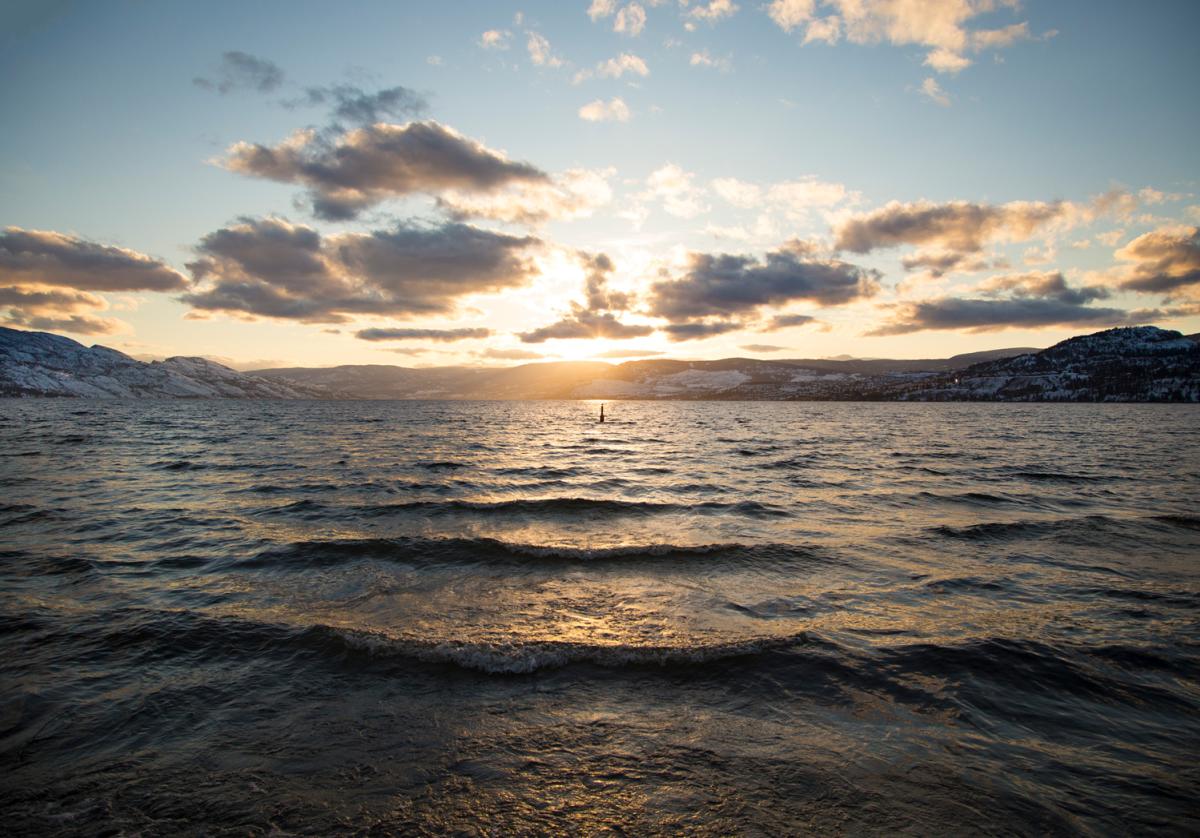Between summer heat waves, large amounts of rain in spring and fall, and cold snaps in the winter, it sometimes feels like nature has fallen out of balance. This disharmony can affect everything from people to infrastructure, and it draws awareness to the interconnectedness of land and water; how one impacts the other, and how people can be caught in between.
“The way the land relies on that harmony, it’s the same way with people, too,” says Coralee Miller, assistant manager at the Sncewips Heritage Museum in West Kelowna. “When something is hurting in your community, it kind of has that domino effect on everyone else. It really is no different when it comes to the land.”

Coralee Miller conducting a tour at Sncewips Heritage Museum
Miller is also a member of the Syilx/Okanagan Nation. The ‘ilx’ part of Syilx means ‘to weave,’ and Miller sees her relationship with water, land, plants, animals, and people, as one big braid, where each strand relies on the others to stay complete and interconnected. Translating the metaphor into action, it means we can use the earth’s gifts of water, food and shelter, but it’s our responsibility to reciprocate and take care of mother nature in return.
“I fully believe that we are a mirror of nature,” says Miller.
For the Syilx/Okanagan, the relationship with nature begins with water, the “lifeblood of the territory.” Not only did they traditionally rely on water to sustain life, but it was also historically the way the Syilx would travel in the valley—on the lakes and rivers. Water also acted as an architect by cutting and shaping the land. Water is medicine, too, says Miller.

Photo by: Matt Ferguson Photography
“For us, when our hearts are heavy, we’re instructed to ‘take it to the water.’ There are lots of different ceremonies that revolve around the water,” she says. “So water’s not just a resource to us, it’s our heritage.” The land is part of her heritage, too.
When visitors come to Kelowna, they see Okanagan Lake and the surrounding mountains and trails as a vacation playground for swimming, boating, hiking and mountain biking. Miller would like them to step away from that tourist perspective and try to also view the valley as someone’s heritage or someone’s home.
This means being considerate of the land and water by taking only photographs, respecting fire bans, leaving no trace (don’t litter), and use caution on trails when bears or other wildlife are in the area. And if you find a pictograph, appreciate it, but keep it a secret.
“We love to have visitors,” says Miller. “Even before settlement we valued trade and interaction and a cultural exchange, but there are protocols that need to be followed.”
To learn more about the Okanagan Nation, Coralee Miller recommends visiting the following attractions:
- The Sncewips Heritage Museum in West Kelowna is a living museum that teaches visitors about Syilx history and culture from an Indigenous perspective.
- The Okanagan Heritage Museum in downtown Kelowna tells the valley’s geological and anthropological history from before settlement to modern times.
- The Nk’Mip Desert Cultural Centre in Osoyoos uses the landscape outside the centre, along with indoor displays, to tell the story of the Osoyoos Indian Band, which is a member of the Okanagan Nation.








